Written by Katelyn Winberg, SDSU Agronomy, Horticulture, and Plant Sciences undergraduate student, under the direction and review of Kristine Lang, Assistant Professor, and Rhoda Burrows, former Professor & SDSU Extension Horticulture Specialist. Special thanks to Beth Nagel and Jordan Rollefson for peer review of this article.
Introduction to Edamame
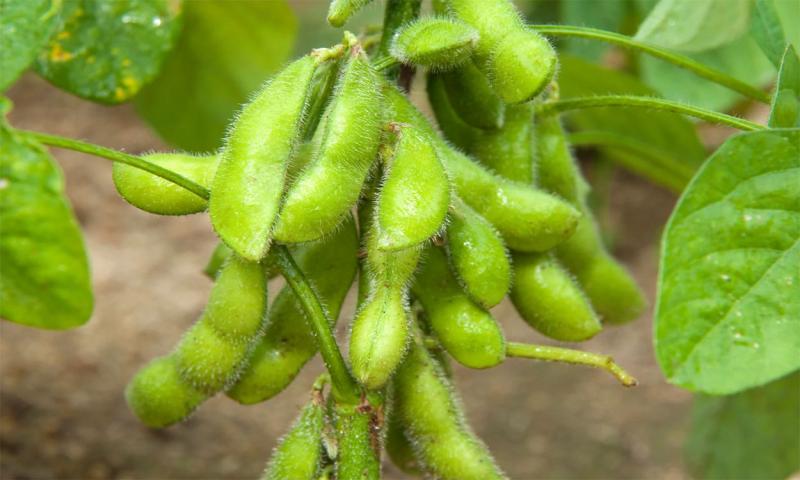
Edamame is the Japanese name for edible, immature soybeans, which are cooked prior to eating. The crop has been used in East Asia for thousands of years in various ways, from tasty side dishes to medicinal substances. Edamame has been characterized as a snack with a nutritional punch. It is a warm-season annual plant that belongs to the Fabaceae family. Depending on the cultivar, edamame production is often the same as traditional soybeans until harvest. For Midwest production, edamame is planted outdoors in late spring and has a growing season of 10 to 12 weeks. They also may be transplanted from greenhouses, grown in high tunnels, and can even be produced hydroponically.
There are various different varieties of edamame, but some of the most popular include the following.
Edamame Varieties
Agate
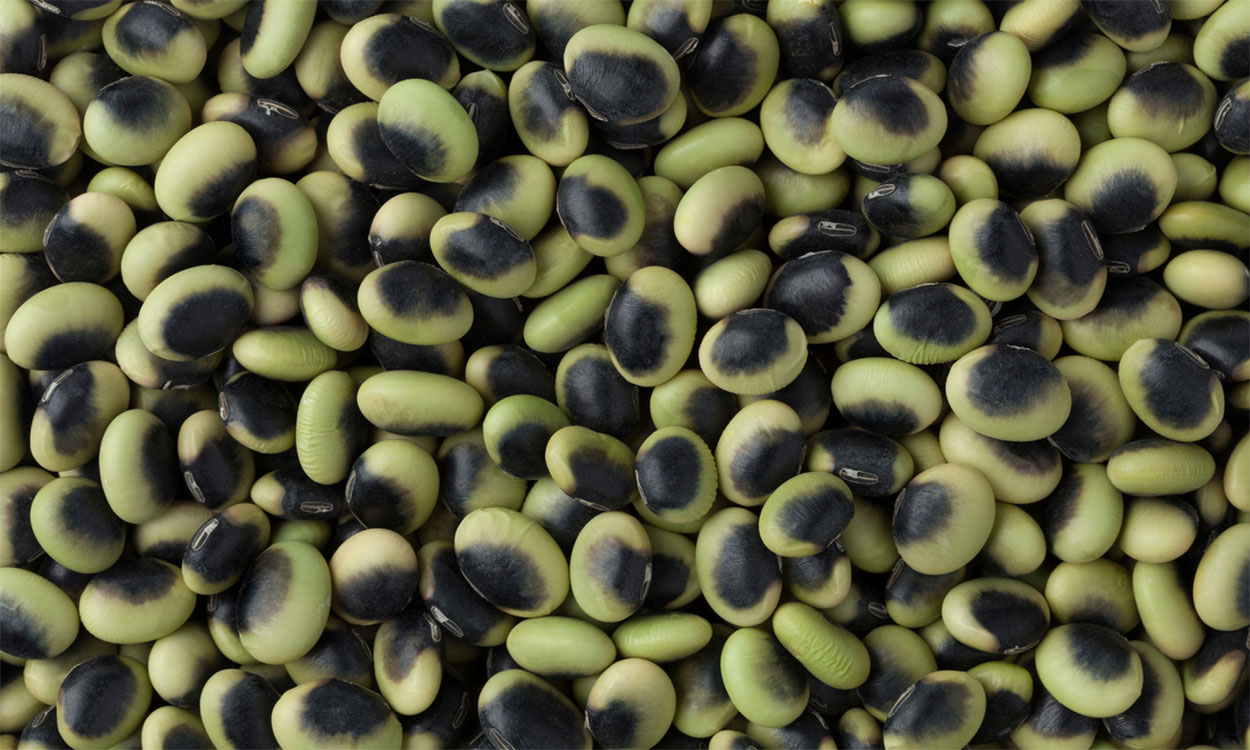
This is an heirloom variety that came to the United States in the 1920s. Seeds are small and olive-green with brown saddles.
Chiba Green
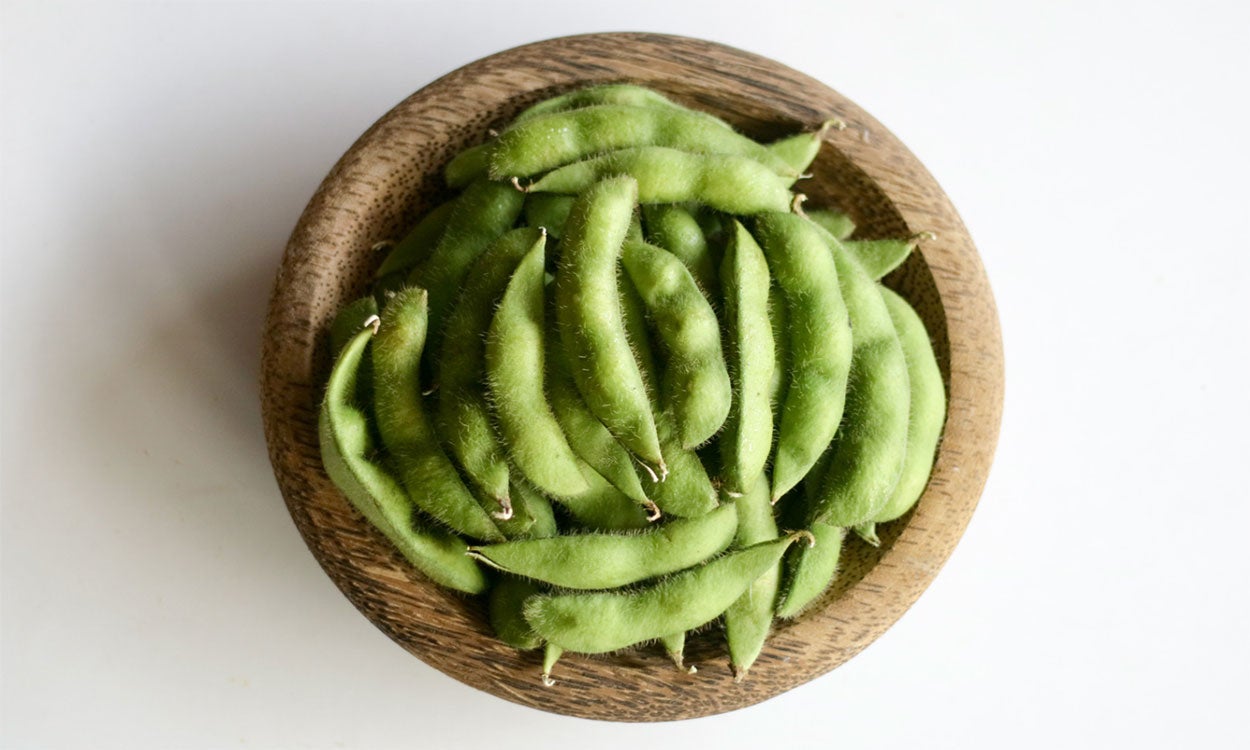
This early-ripening variety is very productive with big beans that have good flavor. The chiba green is also a bush bean.
Kuroshinju
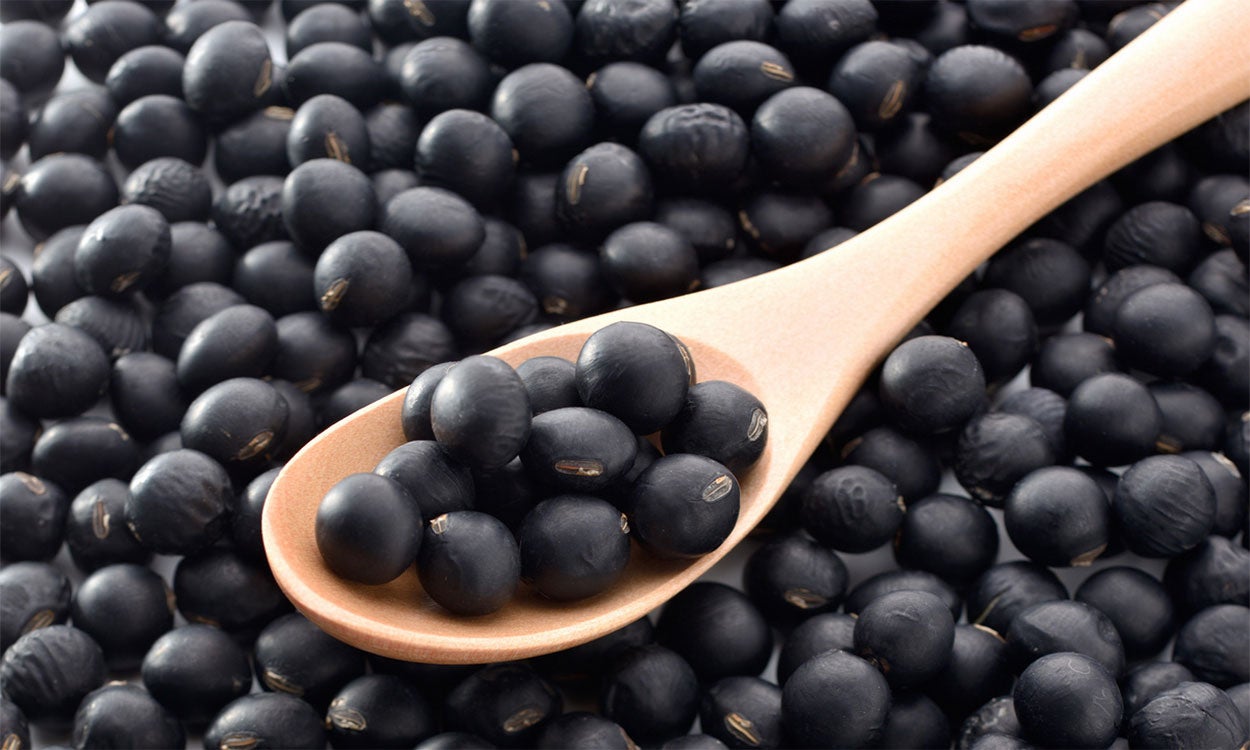
Also known as “Black Pearl,” this heirloom variety’s seed coat is black when fully cooked. It is said to have a silky texture and sweet flavor.
Manitoba Brown
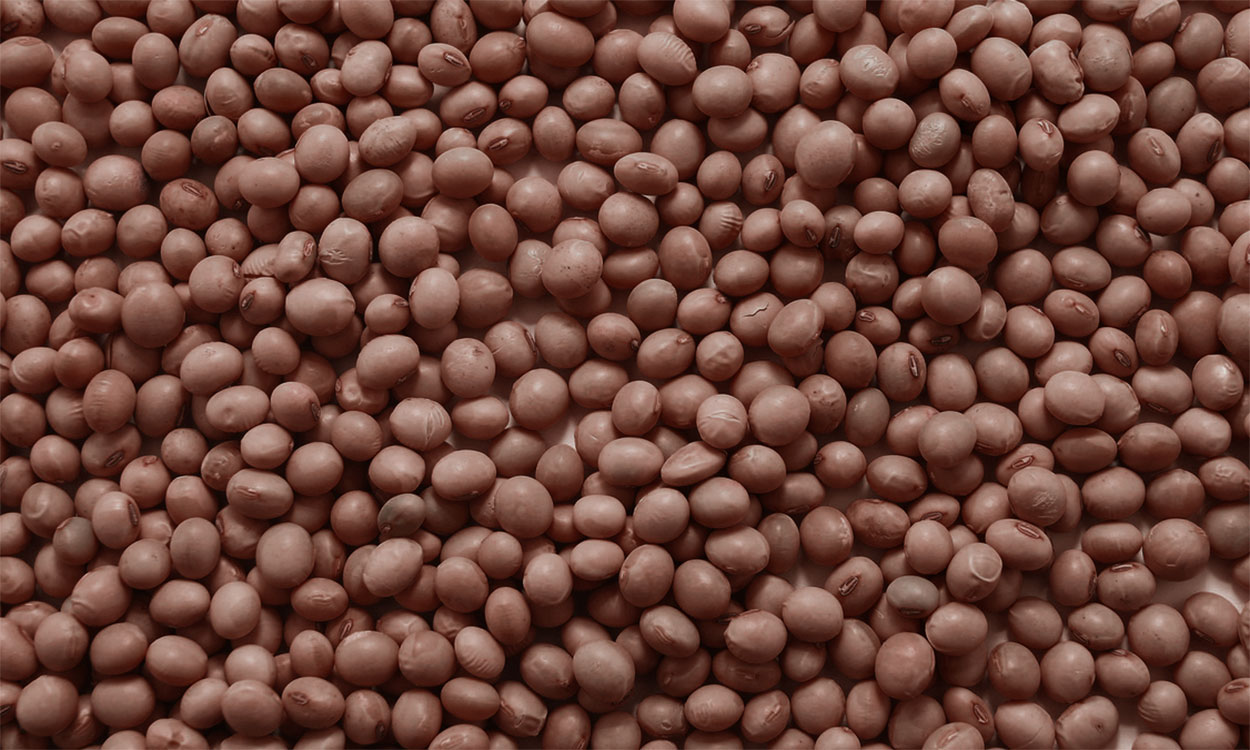
This variety was developed in Manitoba, Canada and is well-suited for northern climates. It has brown beans when dry, but its taste is consistent with other varieties.
Tohya

This variety has performed well in North Dakota. It ripens early, has bigger pods and has more-flavorful seeds than other varieties that also ripen early.
Managing Edamame Quality
Irrigation may be necessary for growing edamame, especially during times of increased water demand, such as the flowering period and pod-fill stage. Conduct a soil test in the early fall of year preceding planting in order to determine the fertilizer requirements. Most herbicides for soybeans are not suited for edamame, so growers often rely on mechanical and hand cultivation for weed control. Most soybean pesticides are also not suitable for edamame. The plant does face many enemies in the form of disease and insects, but since the plant is harvested while green, it avoids many late-season problems. Pests that attack edamame include: soybean aphids, stink bugs, and leafhoppers. The best way to deal with these pests is to select more pest-resistant varieties, such as Chiba Green. The most common diseases for edamame are: powdery mildew, frogeye leaf spot, rust, and bacterial blight. These diseases can be managed by using fungicides, choosing resistant varieties, and practicing crop rotation.
When to Harvest Edamame

Edamame should be harvested when the pods are full-sized and bright green. This is usually around soybean growth stage R6, which is the final stage before maturation. Growers will know the crop is ready when the beans are nearly touching each other in the pod.
Edamame is usually harvested ten to twelve weeks after planting, and the harvest window only consists of a few days. Most of the pods will ripen at the same time. They should be harvested before any yellowing of the leaves; if harvested after yellowing begins, the beans start to taste starchy rather than sweet and nutty.
Growers should harvest in the early morning when the edamame is cool in order to help maintain freshness.
How to Harvest Edamame
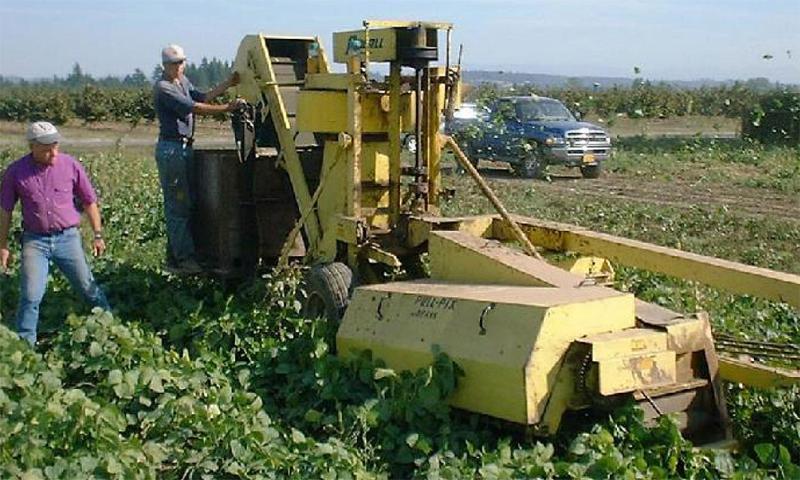
Edamame is usually harvested by hand on small farms and can be harvested similarly to peas or green beans. Gently pulling them off the plant or using garden shears and then placing into bins or baskets is how most hand-harvesting is done. Some edamame farmers harvest by clipping the plant at the soil surface and selling the whole plant. This is the traditional way to sell edamame in East Asia, and it also reduces labor.
Mechanical harvesting of larger amounts can be done using a modified green bean picker. Certain cultivars are better-suited for mechanical harvest, such as those that have a more compact growth habit, like the Kuroshinju variety. Continuous harvests can be facilitated by sowing seeds several times in succession, similar to green beans.
Cleaning Edamame
Edamame can be consumed with the beans taken out of pods or even with the beans remaining in the pods. This means the whole pod needs to be thoroughly cleaned before it hits the market. Edamame can be cleaned similarly to other plants like green beans or peas. This can be done by simply putting the edamame in a colander or strainer and rinsing them under running water. Afterwards, transfer to a towel and pat-dry or air-dry.
Sorting and Marketability of Edamame

There are no USDA standards for edamame. Farmers generally market their edamame as vegetables rather than conventional oilseeds. Today, most edamame in the United States is sold at farmer’s markets.
The traditional way to sell edamame in East Asia is to leave the pods on the plant and bunch a few plants together in a bouquet.
Edamame is also often sold frozen to grocery stores. This frozen edamame is sold either shelled or in the pod, rather than on the plant.
One aspect that makes edamame difficult to market is the fact that it’s unfamiliar to American consumers. Edamame has been most consumed in Asia until the last few years, so education is still needed for the general demographic to understand how to use edamame.
Harvest and Post-harvest Food Safety
Edamame are considered low-risk in terms of food safety. Edamame pods do not usually make contact with the soil while growing, and the pods have few crevices for soil and debris to hide in, so cleaning is usual minimal. In addition, edamame are not eaten raw, but rather are boiled in water or steamed, killing any potential biological contaminants.
On-Farm Storage of Edamame
For best results, edamame should be refrigerated immediately to maintain freshness. However, if necessary, they can wait to be refrigerated for up to three days after harvest before they begin to wilt and become unmarketable. The proper conditions for refrigeration of edamame are at 32 degrees Fahrenheit and 95% humidity. Edamame kept in these conditions can retain their freshness for up to two weeks. Edamame can become moldy and mushy if not stored correctly. Long-term storage can include blanching (for three to four minutes) then freezing, or drying using an oven or dehydrator. Transport may be affected, because of the necessity to keep the edamame cool, and a refrigerated truck may be necessary to growers of this plant.
Marketing Edamame
Currently, edamame is a fairly niche product sold in farmer’s markets. Edamame is most often sold in three ways: by the bunch, pod, and bean. Selling edamame by the bunch (i.e. four to six whole plants bunched together) is the traditional way to sell the crop, and it also helps to preserve the pods and beans longer, while also reducing labor. Selling by the pod, however, may be more desirable to consumers who want to eat edamame while in the pod. Selling by the bean may be more desirable to customers who do not want to do any of the labor of removing edamame from the plant or the pods. Besides farmers markets, there are restaurants that purchase the crop from producers. Most restaurants that offer edamame serve Asian food and sell edamame as a side dish, although they are often included as an ingredient in other dishes. The most-popular way to prepare edamame is to boil or steam them, but there are various recipes that use edamame in dishes, such as salads and hummus.
References
- Garden-Robinson, J. & P. Halsted. Edamame!. North Dakota State University Extension Service. Retrieved November 14, 2022.
- Kaiser, C. & M. Ernst. Edamame. 2020. University of Kentucky College of Agriculture, Food and Environment Cooperative Extension Service. Retrieved November 14, 2022.
- Kalb, T. Edamame for North Dakota. 2016. North Dakota State University. Retrieved November 14, 2022.
- Menger, J., A. A. Hanson, & R. L. Koch. Evaluation of Insect Pests on Edamame Varieties in Minnesota. 2018. Retrieved November 14, 2022.
- Miles, C. A., J. O’Dea, C. H. Daniels, & J. King. Edamame. 2018. Pacific Northwest Extension. Retrieved November 14, 2022.
- Nleya, T., P. Sexton, K. Gustafson, & J. M. Miller. Soybean Growth Stages. 2019. South Dakota State University Extension. Retrieved November 14, 2022.
- Williams II, M. M., B. Zhang, X. Fu, & J. Ross. Editorial: Everything edamame: Biology, production, nutrition, sensory and economics. 2022. Retrieved November 14, 2022.
- Zhang, B., N. Clinton, & N. Lord. Production and Economic Considerations for Fresh Market Edamame in Southwest Virginia. 2019. Virginia Cooperative Extension. Retrieved November 14, 2022.


